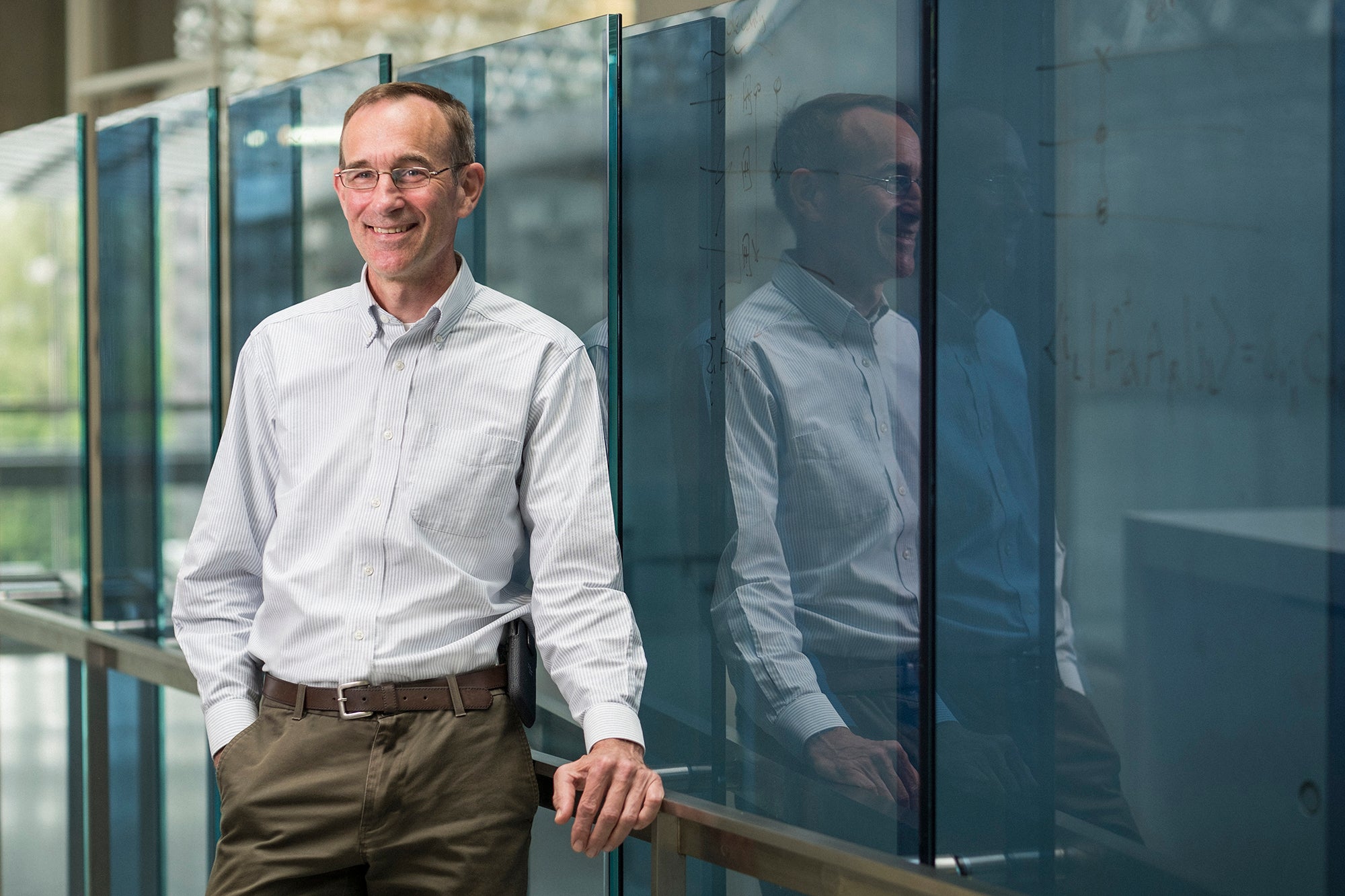
Raymond Laflamme, Department of Physics and Astronomy professor at the Institute for Quantum Computing (IQC) at the University of Waterloo, keeps himself curious by exploring new areas of interest.
One weekend he may be building a canoe from scratch, and another week he’ll be working with a team building a simulation of a theory of quantum gravity and testing it on a quantum processor.
Working with a team of international researchers, Laflamme, the Mike and Ophelia Lazaridis John von Neumann Chair in Quantum Information, has published his recent findings on simulating a property in quantum gravity on a quantum processor. Laflamme is energized by the finding because quantum gravity has, up until now, been mainly theoretically-based.
“We haven’t explored [quantum gravity] on a quantum computer before in part because we haven’t had a quantum information processor to use,” he said.
Laflamme and his team simulated the property characterized by the Ryu-Takayanagi (RT) formula that appears in the field of quantum gravity using a nuclear-magnetic resonance (NMR) quantum processor. Gravity is a force of nature; the other three forces of nature (strong nuclear, weak nuclear and electromagnetic force) have all been well documented in quantum theory. Gravity has not fit as easily into quantum theory, Laflamme notes, because it is a weaker force of nature compared to the other three, and thus harder to characterize behaviour at the quantum level.
The research, conducted in IQC’s nuclear magnetic resonance lab, used a small quantum processor to make a manipulation of the RT formula and then examine the property to see if obeys a relationship that theorists have predicted.
Laflamme was pleased with the findings.
“We were able to show the results,” he said. “If we had a perfect quantum computer the answer would have been a yes.” Due to the noise detected in the quantum processor, Laflamme’s finding did not perfectly match the theorized curve of the equation, but it was close enough that it showed that the property was respected when manipulated in a simulation.
“In some sense what we are really doing is asking, do we have enough control on a quantum processor to be able to make simulations that could relate to quantum gravity,” he said. “If the answer is no then we had better go back and get control on our quantum computer.”
For Laflamme, the answer was yes: the quantum computer is good enough to start to test theories that have an expected answer. Quantum simulation is rarely a yes/ no output, he notes. Rather it is more like weather simulation where there is room for error, but the errors become fewer the better the technology becomes.
Laflamme is already looking to the future when better quantum computers with more qubits and less noise allow researchers to learn properties of states that classical computers can’t compute and that theorists haven’t predicted the answers to yet.
“This is a first step to ask a question and a first attempt to plunge into the field of quantum gravity, but it’s not going to be the last one,” he said.
As for that canoe, it’s waterproofed, but he’s not sure it will float. Like with his quantum research, Laflamme will be testing his theory in a real-time environment and hoping for a positive outcome.
The paper Measuring holographic entanglement entropy on a quantum simulator was published in npj Quantum Information on April 23, 2019.